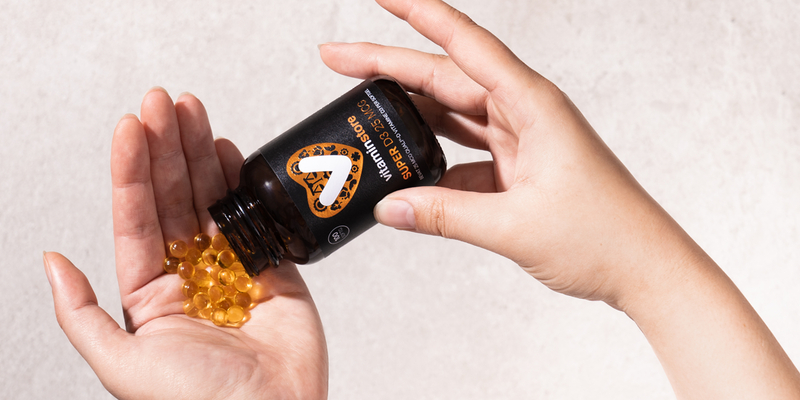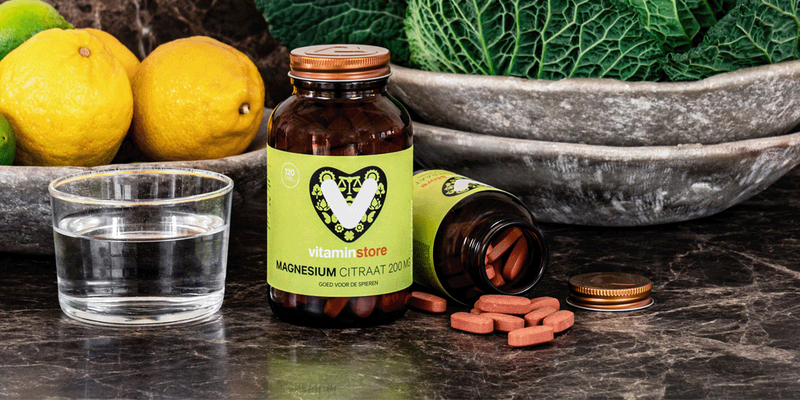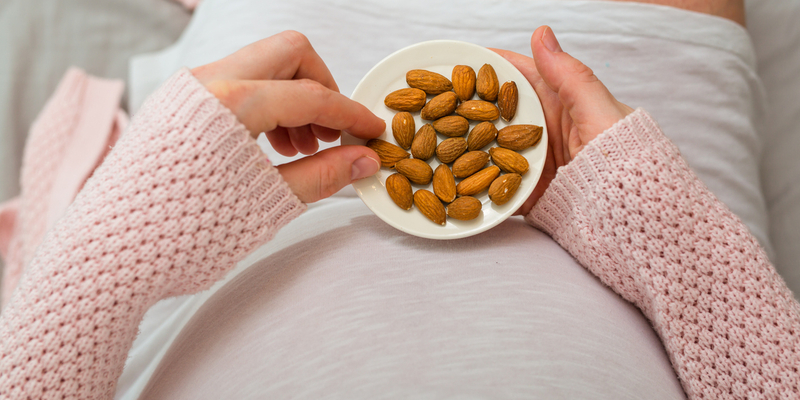
Vitamin D and Nutrition: What Contains Vitamin D?
Vitamin D, an essential vitamin, plays a significant role in our daily lives. Most of us are delighted by the greatest source of vitamin D, the sun. Besides the warmth on your skin and the happy hormones your body produces, your body is also busy producing this sunshine vitamin. However, there are also foods that contribute to your vitamin D levels. Is the sun not shining? Discover in this blog how you can still get your daily dose of vitamin D without too much effort.
The Importance of Sufficient Vitamin D
Vitamin D is an important vitamin for our body, particularly for our bones. Vitamin D increases the absorption of calcium in the bones, thus helping to maintain strong bones. Besides strong bones, vitamin D is also important for strong teeth. But, there's more!
The vitamin also aids in the cell division process and plays a role in tissue growth and development, something that occurs all day long in our body. It is beneficial for the muscles and helps maintain flexible muscles. Another crucial role of vitamin D is in our immune system. The vitamin supports the natural immune system of our body cells, thus boosting the immune system. Want to know more? Read all about vitamin D here.
Vitamin D and the Sun
You are probably aware that sunlight is the main source of vitamin D. When your skin is exposed to sunlight, your body produces vitamin D itself. This is one of the most natural and efficient ways to obtain sufficient vitamin D.
How much sun do you need?
The amount of sun you need depends on various factors, such as your skin type, the time of year, and where you live. Generally, it is recommended to get about 15-30 minutes of sunlight on your hands, face, and arms daily, without sunscreen, to produce enough vitamin D.
On average, a fair skin can produce about 10,000 to 20,000 IU (International Units) of vitamin D after 15-30 minutes of sun exposure on a sunny day. That is 250 to 500 mcg of vitamin D. For people with darker skin, this can take longer, as the higher amount of melanin in the skin slows down the production of vitamin D.
It is, of course, also important to sunbathe in moderation and avoid excessive exposure. Do you live in an area with little sunlight? Then it can be difficult, especially in the winter months, to get enough vitamin D from the sun. In such cases, it is even more important to pay attention to your diet. For instance, vitamin D in autumn can be a welcome addition.
The Best Sources of Vitamin D
We produce vitamin D ourselves when we expose our skin to the sun, and this remains the best source of vitamin D. But, of course, the sun does not always shine. Fortunately, there are also foods that contain some vitamin D.
Foods with Vitamin D
Vitamin D is mainly found in fatty foods. This makes sense because vitamin D is a fat-soluble vitamin and needs fat to be properly absorbed. Nature has thought this through! Which foods contain a lot of vitamin D? We've listed the best sources for you:
-
Fatty fish such as salmon, mackerel, anchovies, and sardines are sources of vitamin D. Below is an estimate of how much vitamin D per 100 grams per fish.
-
- Sardines: 3.3 mcg per 100 grams.
- Anchovies: 11 mcg per 100 grams.
- Salmon: 4.6 mcg of vitamin D per 100 grams.
- Mackerel: 8.2 mcg per 100 grams.
- Tuna: 2.1 mcg per 100 grams.
- Cod liver oil is another rich source of vitamin D. It may not be the tastiest, but one tablespoon provides a whopping 250 mcg of vitamin D.
- Egg yolks also contain vitamin D, albeit in smaller amounts. Two egg yolks provide about 4.35 mcg of vitamin D. Eggs are also a good source of protein and other essential nutrients.
- Fortified foods with vitamin D such as margarine and cooking and baking products.
- Mushrooms such as shiitake, portobello, and champignon, provided they have been under a UV lamp or in the sun for at least half an hour.
How Much Vitamin D Do You Need Per Day?
What is the recommended daily amount of vitamin D? This depends on your age, gender, and health condition. Here are the general recommendations:
- Babies up to 1 year: 10 micrograms (400 IU). Want to know more? Read this blog about vitamin D and K for babies.
- Children from 1 to 18 years: 10 micrograms (400 IU)
- Adults up to 70 years: 10 micrograms (400 IU)
- Adults over 70 years: 20 micrograms (800 IU)
- Pregnant and breastfeeding women: 10 micrograms (400 IU)
During the winter months or for people who spend little time outdoors, it may be necessary to take a vitamin D supplement to meet these recommendations.
Good to Know
Vitamin D is important for your health. Ensure you get enough by exposing your skin in moderation. In addition to this (and in less sunny times), you can also obtain vitamin D through your diet.
Our tip: try to eat a portion of fatty fish 1 – 2 times a week. This way, you get both some vitamin D and omega-3 fatty acids. And when the sun does shine? Enjoy it!
Sources
- Gorter, E. A., Hamdy, N. A., Appelman-Dijkstra, N. M., & Schipper, I. B. (2014). The role of vitamin D in human fracture healing: a systematic review of the literature. Bone, 64, 288-297.
- Dawson-Hughes, B. (2017). Vitamin D and muscle function. The Journal of steroid biochemistry and molecular biology, 173, 313-316.
- Aranow, C. (2011). Vitamin D and the immune system. Journal of investigative medicine, 59(6), 881-886.
- Gilchrest, B. A. (2008). Sun exposure and vitamin D sufficiency. The American journal of clinical nutrition, 88(2), 570S-577S.
- Libon, F., Cavalier, E., & Nikkels, A. F. (2013). Skin color is relevant to vitamin D synthesis. Dermatology, 227(3), 250-254.
- Rijksinstituut voor Volksgezondheid en Milieu. (n.d.). Nederlands Voedingsstoffenbestand (NEVO). Accessed on 19 July 2024, from https://nevo-online.rivm.nl/
- Gezondheidsraad. (2012, 26 September). Evaluation of the dietary standards for vitamin D. https://www.gezondheidsraad.nl/documenten/adviezen/2012/09/26/evaluatie-van-de-voedingsnormen-voor-vitamine-d







